Necessity may be the mother of invention. But that doesn’t mean being the inventor is an easy feat. Just ask Dennis Dunphy and Jill Miller.
Jill Miller, creator of Tune Up Fitness® and the Roll Model® Method, and Dennis Dunphy, co-creator of Stick Mobility® are groundbreaking innovators in the field of self-care healthcare with a focus on mobility.
Mobility encapsulates strength, stretch and motor control. Pretty straight-forward, right? Not if you’re a teacher of mobility. Oftentimes students need much more than a simple stretch or strength-building exercise to truly “get it” and transform sub-optimal posture and movement patterns.
This is where mobility tools can make all the difference–which is how the Mobility Sticks® and Roll Model® therapy balls came to be.
But these tools are more than just props to play with: they contain the ability to truly educate the student on how to upgrade the way they move, and live, in their body.
In the below conversation with Dunphy and Miller you’ll get an insider’s glimpse into how they each created their fitness systems, how they deal with push-back, and why a great mobility tool can make all the difference!
Committing to a Life of Health and Wellness
Dennis Dunphy grew up in the restaurant industry, and had a four-year stint working at a bank before he shifted into the fitness world.
Of working at the bank, he says “it was just horrible,” unlike his relationship with fitness.
“I loved working out,” shared Dunphy. “I loved health and fitness, it’s something I enjoyed so [I thought] let’s find a way to make it a career and help people improve their quality of life.” So he moved from Buffalo, NY to the Silicon Valley in California and started up as a trainer at a local 24 Hour Fitness.
For Miller, it was a similar shift into wanting to help people. Although she started out pursuing a career in acting, with yoga as her “mistress,” she shifted to considering teaching as a profession when the World Trade Center attack happened on 9/11.
“After 9/11 I had a crisis of soul which was that as a waitress and an actress, I wasn’t actually making peoples’ lives better. The social justice person in me came out and was like this is really a self-serving thing, ultimately. The acting was never going to be healing people directly.
“I threw away the headshots, told my agent not to send me out anymore, and I started teaching.”
The Decision to Become an Innovator
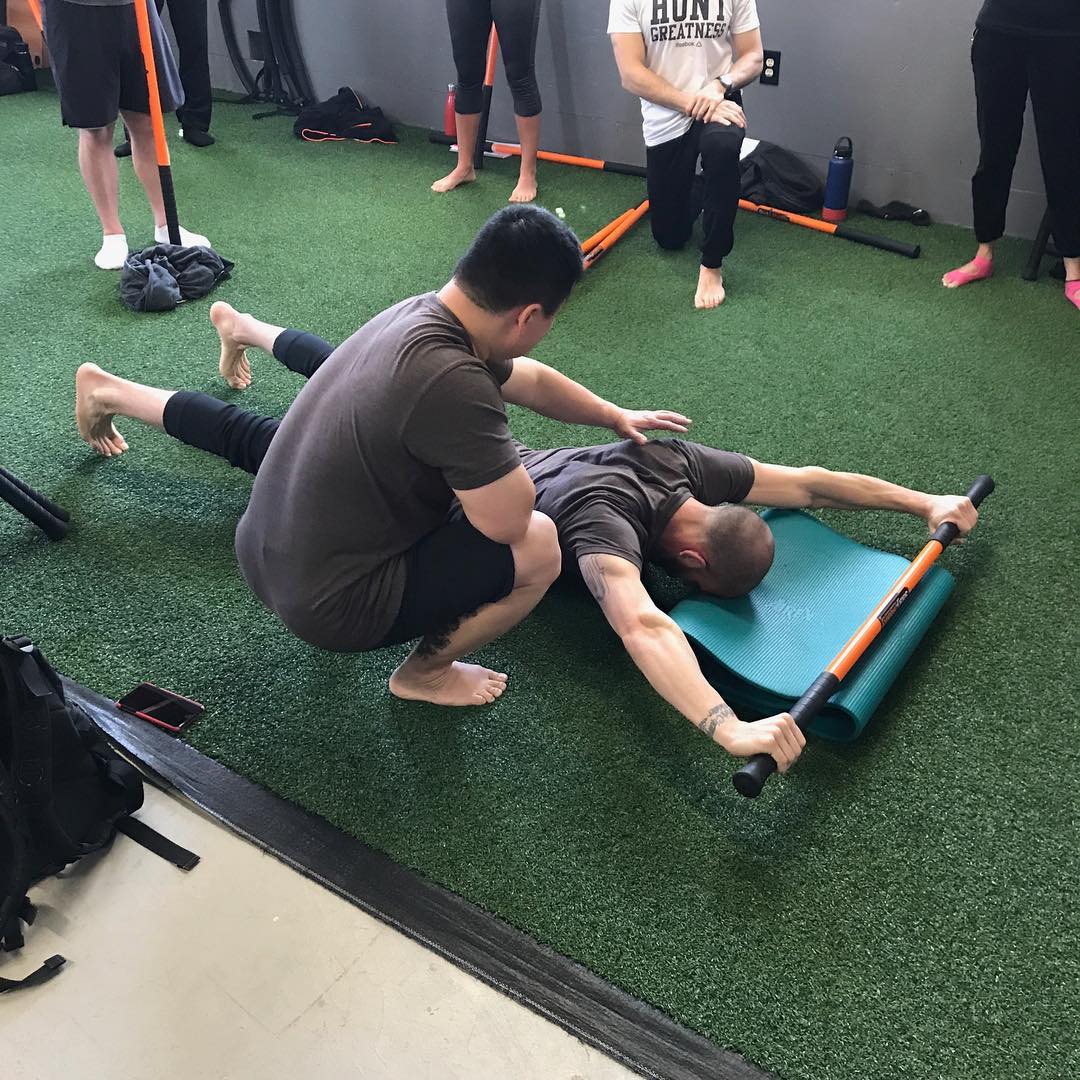
For both Dunphy and Miller the shift from teaching others’ systems, to innovating their own, happened seemingly by chance. But there is a noticeable carpe diem moment in each of their stories–where they saw the opportunity, took it and ran with it, instead of backing down.
For Dunphy, it was a fateful trip to Santa Cruz with his partners Neal and Mitch to study with chiropractor Dr. Arthur Faygenholtz, creator of Stick Yoga®.
“Myself, Neal [Valera] and Mitch [Taylor] had been told for a couple years we had to go check him out,” recalls Dunphy. “We finally got to Santa Cruz. He had a one day course. Literally in the first hour we looked at each other and said, what is this? This is amazing! We talked with the doctor after, then went back and did a whole weekend.”
The unique aspect of Dr Faygenholtz’s work was “really understanding how to connect the fascial lines and get that kinesthetic feedback,” recalled Dunphey. “Because we talked about that with clients. But they need to feel it. They have a hard time physically understanding what that feels like and how to create that.”
Dunphy continues, “with the stick, you just tell them, do this with the stick, you feel that? They’re like YES, and you’re like, that’s packing the shoulder. And they were like, oh yeah that was easy!
“Being a meathead for so many years my thoracic rotation was so bad and the very first time he had us starting to do thoracic movements i was like, oh I need this. This is amazing.”
After that full weekend studying with Dr. Faygenholtz, Dunphy and his colleagues realized, “You can systemize this and bring a whole new strength training aspect and [Dr. Faygenholtz] said if that’s what you want to do, you can do it. Literally on the way back from Santa Cruz, Neal was like ‘Stick Mobility’ and we were like done–get it. So that’s where it was born.”
Next, Miller piped in on when her experimentations deconstructing yoga turned into her first branded movement system, Yoga Tune Up®.
“It’s funny,” recalls Jill, “I was helping with a video shoot–helping to spot other yoga teachers. As we were ending the day [the producer] asked, do you want to do a ten minute thing? I was like, yeah I want to make a yoga tune up for shoulders for my mom. So I called it ‘Shoulder Tune Up’ and in the intro I said the words ‘Yoga Tune Up’… That was the inception moment.”
Interestingly, it was the resistance of Miller’s boyfriend at the time that spurred her on: “I told my boyfriend, I think I’m going to call what I do Yoga Tune Up. He was very spiritual–a fundamentalist in that way. He said it was a terrible name. I knew if I triggered him that much, I was probably on to something.”
She then recalls the next steps, “I was lucky enough to get a job teaching at Equinox. My manager there offered me a lunchtime class and asked what I wanted to call it. I said let’s call it Yoga Tune Up! I spent all my money to get it trademarked, then got rejected. After I met Robert [Jill’s husband and co-founder of Tune Up Fitness® Worldwide] who said try again, I got it trademarked.”
Reclaiming Your Birthright–Healthy Movement
Both Stick Mobility® and Tune Up Fitness® are systems that fall into the category of translational fitness. This means they can help practitioners of pretty much any sport or activity improve form, refine strength and access the flexibility necessary to enhance that activity.
“It’s getting people to understand that no matter what skill level you’re trying to achieve, if you can’t move it’s unachievable,” says Dunphy. “It’s understanding that’s having a movement vocabulary that’s really small is going to be detrimental to you in the long run.”
However, sometimes the biggest gain of this work is simply to reclaim positions that you have lost over a lifetime of limited movement.
“Unfortunately there’s a lot of things out there that people see and think that’s exceptional,” observes Dunphy. “And I think that shouldn’t be exceptional, that’s standard.” Squatting falls into this category.
“When people come in and say their doctor said they can’t squat–that’s ridiculous,” exclaims Dunphy. “This is just a regular movement! This is what all humans should be able to just do! The squat is the hardest thing for people in Western culture.”
Both Dunphy and Miller agree that even though they have enhanced students’ abilities to understand certain positions and movements with the mobility tools they created, it’s not about the tool. It’s about the principles the tool can teach.
“I’m happy to talk at great length of the specialness of the product,” says Miller. “But ultimately if you expose yourself to the principles of what we’re teaching, which is how you can really develop and organize yourself… continue to grow yourself–that’s the ‘teach a man to fish’ principle.
“When you learn what we’re teaching you,” continues Miller, “you can innovate into any type of movement model and get something really rich out of it. I think we’ve been able to disassemble a lot of movement myths that span from massage to professional sports. And help feed people something that will give them a lifetime of healthy movement rather than a short span.”
Check out this lesson from Dennis Dunphy on how to improve form for a Deadlift using the Mobility Stick®:
Dealing with Naysayers and Copycats in the Mobility Tool World
Once you add something new to any industry, you’ll probably get push-back. But ultimately, if it truly helps people, it will likely get copied. Some of that copying is innocent–practitioners are just excited to share. Some of it can feel like a downright rip-off of years of deep study and experimentation.
Both Dunphy and Miller use the fuel from naysayers and copycats to drive them toward higher levels of excellence.
“If you’re a creator you can’t help but find every single molecule of your tool to better yourself and then share that zeal with people who are nice enough to listen to you,” says Miller. “And then maybe they start to pay you and it becomes a movement!”
“I brought functional movement into yoga which was heresy at the time,” recalls Miller. “But now everybody’s got functional movement in yoga–like that’s what it is now.”
When newbies encounter the Mobility Stick® for the first time, Dunphy notes they often misunderstand the point of the tool. “The number one thing we get all the time is, oh it’s just a stick! What makes your stick special?” Says Dunphy.
“I say, well it’s not just a stick, we’re teaching you how to USE the stick. That’s the whole point…” continues Dunphy. “It’s about the methodology. It’s about the principles. The stick is a nice finished product, it has tactile feedback. But you can use a wooden dowel or whatever you have at your disposal.”
For Miller, it’s the same with the Roll Model® therapy balls. It’s not just about the ball–it’s about what it can teach you. “We stand behind our education in addition to our products,” states Miller. Over the past decade, this has transformed the world of mobility tools.
“What The Roll Model® book did,” states Miller, “was spawn hundreds of companies who have not only knocked off the colors of our balls, but the packaging, the sizes, the messaging. They’ve taken language that I struggled with for years–to come up with cogent cohesive phrasing and teaching points. To see those things be co-opted by other companies that don’t have the ocean beneath the iceberg IS painful because it is your heart and soul they’ve ripped off. And it does chip away at the bottom line…
“But,” Miller pauses and smiles, “I have so much more coming down the line…”
“I totally agree,” says Dunphy. “Like you said Jill, we see [these imitators] and we’re human so we think what the hell this is crap? We get frustrated and think, you know you could just partner with me instead of doing the knock-off stuff.
“But competition is competition. It also forces us to keep up in our game, to keep innovating. And that’s a good thing because it gets us to set another bar. We’ve got more stuff in the works. The competition is good to help us maintain a level of excellence and to grow.”
Pursuing Excellence and the Web of Expertise

“Yeah, that level of excellence thing, it just really forces you to know yourself and it sharpens you like a diamond,” says Miller. “It sharpens and clarifies how you are differentiated from other brands.”
Dunphy and Miller both note the joy of connecting to other innovative fitness brands. It inspires and motivates them to work with like-minded creatives.
“The true innovators find each other,” says Miller. “And we have this virtual bond that is the excellence bond–you see the excellence in the other leaders in this field. The other leaders that I’m friends with and partner with are never going to have millions and millions of dollars. That’s just not their thing. They are true originators, true creators, true scientists and researchers that generously give this data–they have no stake other than to help humanity.”
“The entrepreneur,” she continues, “is someone who also likes to monetize. But we are supported by really complex networks of partners who are a part of an ecosystem and obviously get something out of being affiliated with us also… and support the work. To me that’s a very big fascial fabric–it’s a massive web. And it’s extremely precious to me.”
Check out this video of Jill Miller teaching how the Coregeous® ball can help stimulate various brances of the vagus nerve, while helping you better understand your own vagus!
Related Article: Power Exercises for Inner Peace: A Conversation with Olympic Weightlifter Elizabeth Wipff and CrossFitter R.E. Lewis
Learn more about our Therapy Ball Products and Programs
Interested in video and blog content targeted to your interests?
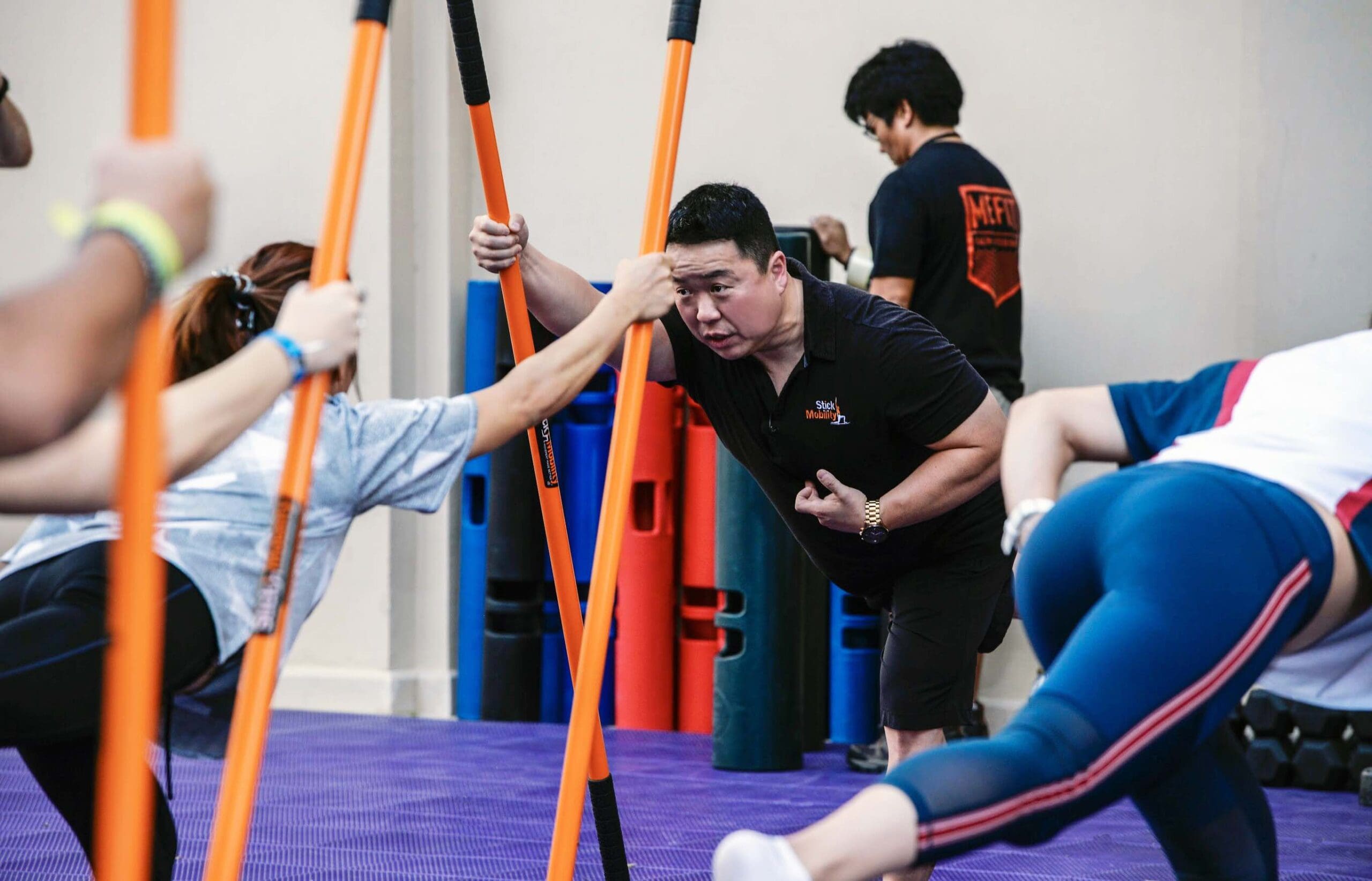



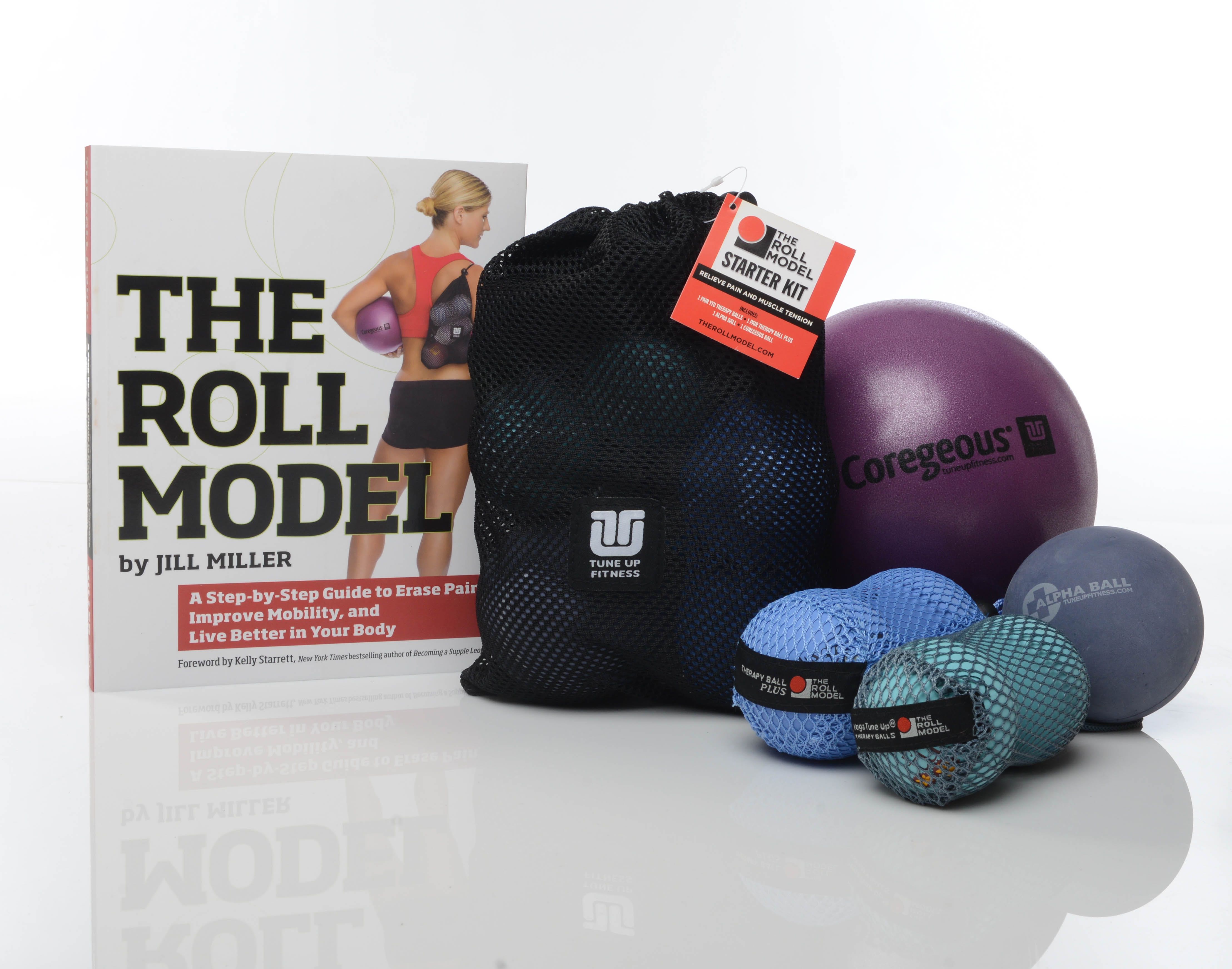



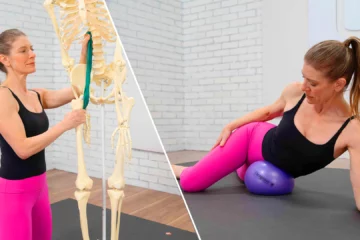




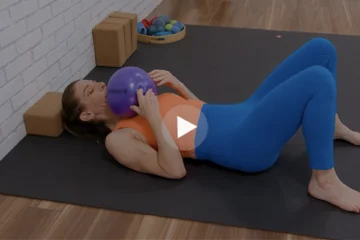
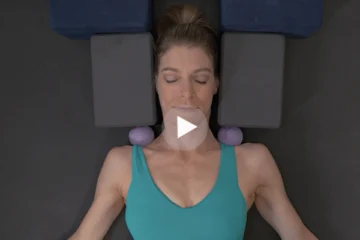


This is a great article about the journey of an entrepreneur. I was aware of “stick mobility” before but it never really fully came on my radar till now. I’ve experienced one barre class that may share some similarities but this really has peaked my interest now. I can’t even imagine how competitive it must be in the industry once one gets to you guys level. All I know is how grateful I am for these tools and the ability to share them with people in need in my community.
I LOVE the feeling of the “light bulb moment” when everything comes together and all the puzzle pieces fit. It really is how I live most of my life, I need it to feel right and have those moments of THIS IS AMAZING!!! The desire to buy everyone in your family a set of therapy balls (which I did…lol) and are sometimes even slightly offended when people just don’t understand why you are so jazzed about the new discovery you’ve made are both things I really do enjoy experiencing. I am now inspired to investigate what this “stick mobility” is about!
Ah, transitional fitness. It has a name. While, I am so happy that I found Yoga Tune Up a decade ago and stick mobility this past year. They have both been influential on my teaching. I also loved hearing how Jill came up with the name Yoga Tune Up. I have wondered.
Two stories of success !!! It was very interesting to read both backgrounds and how all began. Thanks fot sharing 🙂
Very Nice to hear about a little bit of background about both tune up and stick mobility.
I have both seen & experienced how effective these methods translate into people healing themselves and improving there movement practices. Truly Amazing!
I love both the balls and Stick Mobility. There is that feedback component that these tools really help in my classes and my students. When I use the sticks, I feel the movement in the joints and become of really aware. With the balls, I find blind spots that I didn’t even know were there. I think both these tools have and are changing mobility training across the globe. It is making mobility more accessible, but easier to teach as well. Most people don’t feel parts of their bodies and a tool that can increase awareness and help them move more is definitely something very valuable.
Some time I think ,There are so many thing we are missing, without knowing what truly means it is.
It seems like Creativity come from after experiencing something, that leads us to do challenge, which light on our mind.
It’s inspiring to hear both innovators explain their mobility tool of choice and I can appreciate the honestly about the competition ripping/knocking off the originals. Glad it has been an opportunity for creation to innovate more and sharpen the saw. That is the only way we can elevate and become better.
WE should all be grateful to the movers and shakers out there that create self care systems like you did! Its difficult to imagine the hours of sacrifice and focus and determination that went into these comprehensive offerings! It is also not easy to be going against the masses, but honoring your passion and drive must have brought you a great deal of satisfaction. Thank you !
Finding ways to obtain additional feedback on how you move is an important element to achieving better movement. These tools seem like valuable aids to “truly educate the student”.